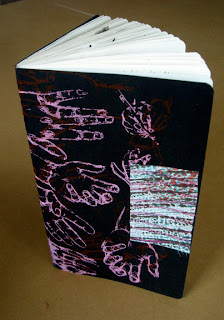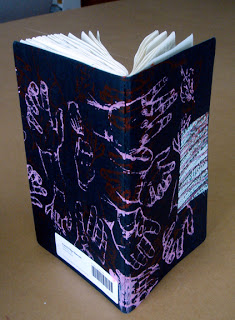Here's what I wrote about my experience:
Most artists I know wish they would draw more. I started drawing in college and for two years, it was all I wanted to do. Then I took up printmaking (markmaking!) and eventually, textiles.
In my textile work, I do a lot of printing and monoprinting- I love color and music and spontaneous expression. Drawing is the act of listening to the world around you, of being an observer as opposed to a participant. Damn it, it requires a lot of patience and concentration. It is meditative.
So, now that I have time to be more of an observer, it is time to draw again, to relearn, to connect hand, eye and head. I also wanted to learn to use sumi ink wash techniques; the world is not all black and white- there’s lots of grey. The sketchbook project gave me the kick in the pants to get this rolling. Being intimidated by the first page, I decided to start in the middle. I also did my drawing in 3 separate sketchbooks each session, to loosen me up and let me try varying papers and approaches. Sometimes I included those other drawings in the Official Sketchbook.
the last of the garden tomatoes
ah, the self-portrait. An excellent way to learn to draw. At my age, it's like an exercise in geography, with mountains, valleys, rivers, desert, certainly more interesting topography, an exercise in humility rather than vanity. Oh, and those GLASSES! And no, not sad, just concentrating.
those birds, so hard to draw, one second and then they move again...I actually had much better examples in the sketchbook.
what's this, you ask? a 15-year old strip of newspaper used to mask wet areas when I do screenprinting. Scanned a few. All about drawing.
Sketchbook cover, inside and out, printed with my screenprint of artist hands and "tabbed" with a monoprinted fabric scrap, covered with matte medium.
Fun with mirrors...




















































